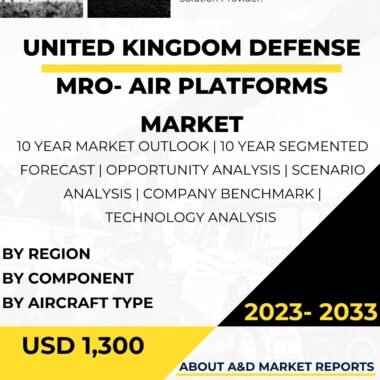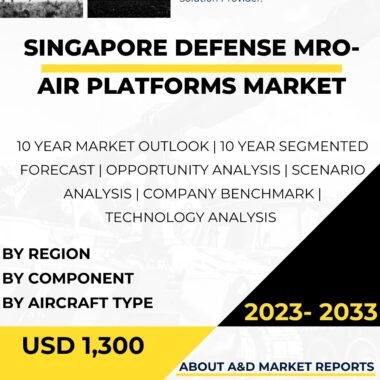Description
Saudi Arabia’s growing demand for aluminum in the aerospace and defense industry reflects its commitment to modernizing its military capabilities and supporting the development of a robust domestic aerospace sector. Aluminum is a lightweight and corrosion-resistant material that is widely used in the construction of aircraft, armored vehicles, and various defense equipment. The Kingdom’s investments in aluminum play a pivotal role in achieving its national security objectives and economic diversification efforts.
In the realm of defense, aluminum is a critical component in the manufacturing of armored vehicles, naval vessels, and military aircraft. The use of aluminum alloys in military vehicles provides a balance between durability and weight reduction, allowing for increased mobility and protection for personnel. Saudi Arabia’s defense industry has been expanding rapidly, and the demand for aluminum components has grown in tandem to support the development and production of advanced military hardware.
Moreover, the aerospace sector in Saudi Arabia has witnessed significant growth, with a focus on both commercial and military aircraft production. Aluminum is a key material in the construction of aircraft frames, wings, and fuselages due to its lightweight properties and high strength-to-weight ratio. The Kingdom’s investments in aluminum for the aerospace industry are integral to the development of domestic aviation capabilities, including the production of regional aircraft, drones, and unmanned aerial vehicles (UAVs).
Saudi Arabia’s engagement in the global aluminum market involves collaboration with international aluminum suppliers and manufacturers. These partnerships facilitate the procurement of high-quality aluminum alloys and provide opportunities for technology transfer and knowledge exchange. By working with established industry players, Saudi Arabia can harness cutting-edge aluminum technologies to meet its defense and aerospace needs efficiently.
Furthermore, Saudi Arabia’s investments in aluminum align with its Vision 2030 plan, which seeks to diversify the economy and reduce its dependence on oil revenue. The development and utilization of aluminum domestically contribute to economic growth, job creation, and the promotion of local industries, including those related to advanced materials and manufacturing.
In conclusion, Saudi Arabia’s increasing demand for aluminum in the aerospace and defense industry underscores its commitment to enhancing its military capabilities, supporting domestic aerospace growth, and achieving economic diversification. As the Kingdom continues to modernize its defense sector and expand its aerospace capabilities, its role in the global aluminum market is expected to evolve, positioning it as a significant player in the production and utilization of aluminum for advanced defense and aerospace applications.
Table of content
Table Of Contents
1 Market Introduction
1.1 Market Introduction
1.2 Market Definition
1.3 Market Segmentation
1.4 10 Year Market Outlook
2 Market Technologies
3 Global Market Forecast
3.1 Global Market Forecast
3.2 By Component
3.3 By End User
4 Middle East Market Trends & Forecast
4.1 Drivers, Restraints And Challenges
4.2 PEST
4.3 Market Forecast
4.3.1 Market Forecast By Component
4.3.2 Market Forecast By End User
4.4 Scenario Analysis
4.5 Key Companies& Profiling
5 Saudi Arabia Analysis
5.1 Current Levels Of Technology Maturation In This Market
5.2 Market Forecast
5.2.1 Market Forecast By Component
5.2.2 Market Forecast By End User
5.3 Scenario Analysis
5.4 Country Defense Budget (Historical and 10- year forecast)
5.5 Defense Budget Category Spending- 10- year forecast
5.6 Procurement Analysis
5.7 EXIM Data
5.8 Patents
6 Opportunity Matrix
6.1 By Component
6.2 By End User
7 Scenario Analysis
7.1 Scenario 1
7.1.1 By Component (Scenario-1)
7.1.2 By End User(Scenario-1)
7.2 Scenario 2
7.2.1 By Component (Scenario-2)
7.2.2 By End User(Scenario-2)
8 Company Benchmark
9 Strategic Conclusions
10 About Aviation And Defense Market Reports
Segments
By Component
By End Users
List of Tables
Table1: Global Market Forecast, Aluminum demand in Aerospace & Defense Industry
Table2: Middle East Market Forecast, Aluminum demand in Aerospace & Defense Industry
Table3: Middle East Market Forecast, By Component
Table4: Middle East Market Forecast, By End Users
Table5: Middle East, Scenario Analysis
Table6: Saudi Arabia Market Forecast, Aluminum demand in Aerospace & Defense Industry
Table7: Saudi Arabia Market Forecast, By Component
Table8: Saudi Arabia Market Forecast, By End Users
Table9: Saudi Arabia, Scenario Analysis
Table 10: Saudi Arabia Defense Budget 10 Year Forecast
Table 11: Saudi Arabia, Defense Budget Category Spending- 10- year forecast
Table 12: Saudi Arabia, Procurement Analysis
Table 13: Saudi Arabia, EXIM Data Analysis
Table 14: Saudi Arabia, Opportunity Analysis, By Component
Table 15: Saudi Arabia, Opportunity Analysis, By End Users
Table 16: Saudi Arabia, Scenario Analysis, By Component
Table 17: Saudi Arabia, Scenario Analysis, By End Users
Figure 1: Market Segmentation, Saudi Arabia Aluminum demand in Aerospace & Defense Industry
Figure 2: Key Technology Analysis, Aluminum demand in Aerospace & Defense Industry
Figure 3: Global Market Forecast, Aluminum demand in Aerospace & Defense Industry
Figure 4: Middle East, Market Forecast, Aluminum demand in Aerospace & Defense Industry
Figure 5: Middle East, Market Forecast, By Component
Figure 6: Middle East, Market Forecast, By End Users
Figure 7: Middle East, Scenario Analysis
Figure 8: Saudi Arabia, Market Forecast, Aluminum demand in Aerospace & Defense Industry
Figure 9: Saudi Arabia, Market Forecast, By Component
Figure 10: Saudi Arabia, Market Forecast, By End Users
Figure 11: Saudi Arabia, Scenario Analysis
Figure 12: Saudi Arabia, Defense Budget 10 Year Forecast
Figure 13: Saudi Arabia, Defense Budget Category Spending- 10- year forecast
Figure 14: Saudi Arabia, Procurement Analysis
Figure 15: Saudi Arabia, EXIM Data Analysis
Figure 16: Saudi Arabia, Opportunity Analysis, By Component
Figure 17: Saudi Arabia, Opportunity Analysis, By End Users
Figure 18: Saudi Arabia, Scenario Analysis, By Component
Figure 19: Saudi Arabia, Scenario Analysis, By End Users
Figure 20: Company Benchmark




